- Rent, Lease, or Purchase
- |
September 7, 2022
What Is an ISO Shipping Container? Understanding the Types and Applications
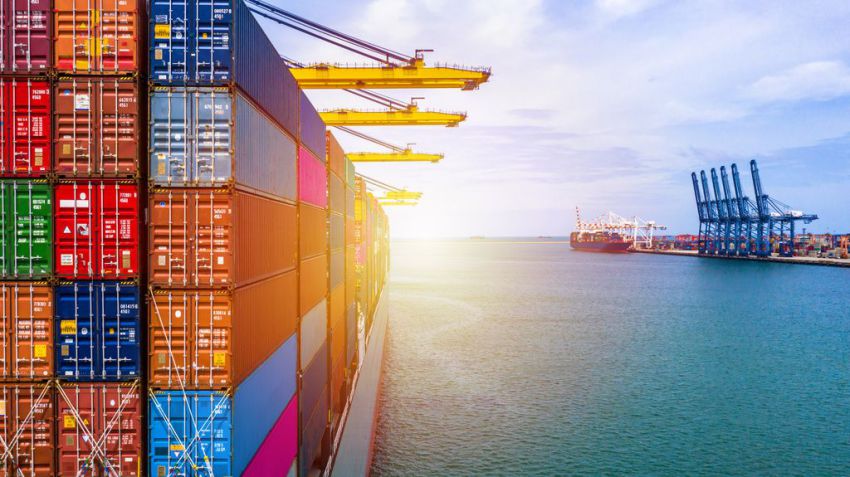
Shipping containers have contributed significantly to the boom in international trade. Before the cargo container came into existence, people transported goods in small boxes, crates, barrels, and other containers of non-uniform size. This made stacking difficult, timely, and led to lots of wasted space.
Standard containers revolutionized the transport systems by providing solutions to these problems. A shipping container that meets the International Organization for Standardization's (ISO) specifications is also known as an ISO shipping container.
Shipping containers are also known as sea or ocean containers, cargo containers, and freight containers. If you are wondering if there's any difference between Conex, cargo, and storage containers, you should know that you can use these terms interchangeably.
Currently, over 20 million ISO standard containers are in use, moving 80 percent of the international trade by road, rail, and air. In this article, we’ll look into the history of ISO containers, the different types, and their applications.
About ISO Shipping Containers
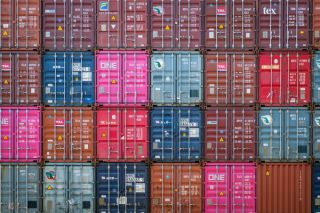
ISO containers are international trade compliant and have specifications as per the standards of the International Standards Organization. They are standardized shipping containers made with corrugated steel that meet the intermodal freight transport durability requirements through ships, railways, and trucks.
The capacity of ISO containers is usually in twenty-foot equivalent units (TEUs). ISO containers can withstand extreme environments and have high structural integrity. Commercial shipping operators can safely and uniformly stack cargo containers on ships, trains, and container yards.
Types of ISO Containers
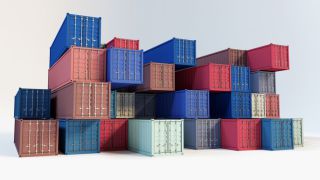
Let's take a look at the different types of ISO containers:
Dry containers
These are the most common ISO containers in the shipping industry. They are suitable for transporting dry items that do not require temperature control. Dry containers are not fit for transporting liquids, food items, and chemicals. They have innovative applications outside of the transportation industry. Businesses are using dry containers as:
- Theaters - Freight containers provide a creative space for entertainment where people can gather in suitable weather conditions. These are temporary theaters which you can place in festivals. You cannot use containers as permanent theaters.
- Schools - In areas where building a brick-and-mortar school is too expensive, freight containers provide an excellent alternative. You can join multiple containers to form bigger spaces.
- Restaurants & cafes - ISO containers are great for designing stylish restaurants, bistros, or cafes in areas with less space. You can join or stack multiple containers for a larger space with a kitchen.
- Offices - Portable offices are very useful in the construction industry. You can also use the containers for meeting rooms, recreation rooms, or waiting areas. They are fully functional units complete with HVAC systems, furniture, shelves, false ceilings, and flooring.
- Emergency hospitals - During natural disasters, cargo containers are convenient for taking medical care in areas where a traditional hospital isn't available. During Covid-19, hospitals used freight containers for testing, sample collection, and vaccination.
- Portable toilets - Maintain hygiene and sanitation by converting freight containers into portable toilets at events or construction sites.
- Ticketing booths - Smaller-sized containers are perfect for ticket booths at events or fairs.
- Retail stores - In urban areas where there isn't enough space for permanent structures, freight containers are good alternatives. You can place multiple containers close to each other for a great shopping experience. The Dordoi Bazaar in Bishkek, Kyrgyzstan, is perhaps the world's largest shipping container market.
- Art studios - Many artists, graphic designers, architects, and interior decorators use freight containers as their studios. You can also use them as an art gallery. The raw industrial look of a shipping container is stylish and adds to the decor of a creative space.
- Swimming pools - Larger-sized containers make great swimming pools for homes and communities.
- Disaster shelters - Shipping containers are an excellent choice as disaster shelters for displaced people during emergencies. They offer safe living space, and it is easy to assemble them quickly.
- Laboratories - They have enough space for use as a portable testing center, examination rooms, and storage units.
Refrigerated containers
They are also called 'reefers' and are suitable for transporting goods that need temperature control between -65 °C and 40 °C. This includes perishable food items.
Reefers have an internal refrigeration unit but need an external power source to run. You will need a power source on the ship, land-based site, or the quay. If you are transporting refrigerated containers on a truck or a train, you can draw power from diesel-powered generators.
Tank containers
ISO containers are safe to transport gases and liquids, including chemicals. They usually have an anti-corrosive coating that keeps the steel safe from hazardous chemicals.
Open top containers
Top loading containers are suitable for dry storage but come without a roof. This makes it easy to load and unload heavy cargo. Once you load the cargo, you can secure it with a plastic roof to protect it from rain, dust, and other precipitation forms.
Open side containers
They have two hinged door units, one that opens on the far end and another on the side. This significantly improves the accessibility and provides more room to enter the container. Open side containers are useful when large cargo cannot fit through the usual doors.
Flat rack containers
Flat racks are platform-based containers with an open top and two side walls. Sometimes they come with additional walls that you can attach or detach as required. A flat rack container makes it convenient to load heavy cargo from the top or sides. It is suitable for transporting heavy machinery.
High cube containers
These containers have a 1-ft. extended height compared to standard dry containers. They have taller doors and some additional weight. They are the same as dry containers but can transport cargo with greater heights.
People often use high-cube containers for building homes and offices with insulation, false interior roofs, and floors. The extra height in these containers makes it easy to live in.
Half-height containers
They have a lower center of gravity and can handle heavy loads better than their taller counterparts. Half-height containers can easily transport dense goods such as coal and stones.
Tunnel containers
They have an opening on both sides, which makes the container resemble a tunnel. Tunnel containers are suitable for storing oversized objects which are difficult to turn around. Having two openings makes it easy, as you can use one as an entry and the other as an exit.
Special purpose containers
These containers are custom-made to any size according to the type of cargo they are transporting. Transporting them is expensive due to their non-standard size. Some examples of where they are useful include military applications to transport weapons and communication systems.
Industry Standards
- CSC certification - The International Convention for Safe Containers (CSC) certifies the container's safety and structural integrity. Each container has a CSC plate which is valid for 5-years. Once a container gets a CSC plate, it must undergo an inspection by a certified inspector every 30-months to ensure that it still meets the necessary standards.
- ISO/DIS 9897-6(en) - This standard specifies general communication elements for container equipment data exchange (CEDEX). This includes guidelines for transmission between ISO container terminal computer systems with the host.
Dimensions
ISO containers come in standard dimensions, which may vary slightly according to the manufacturer but remain within the tolerance limits set by the ISO standard. Common container types include the 20-foot and 40-foot standard height containers, as well as the 40-foot and 45-foot high-cube containers. For example, a 20-foot standard container typically has external dimensions of 19 ft 10 ½ in in length, 8 ft in width, and 8 ft 6 in in height. High-cube containers, such as the 45-foot variant, offer increased height, with external dimensions of 9 ft 6 in in height, while maintaining the same width as standard containers. Minimal internal dimensions and door aperture sizes are also standardized, ensuring consistency across different containers.
Non-Standard and Uncommon Sizes
'Pallet-wide' Containers
- Europe: The European pallet-wide (PW) containers are slightly wider, with shallow grooves on the sides. They offer enough internal width for higher capacity and efficiency in loading.
- Australia: The RACE containers from Australia are also slightly wider for better optimization and use of the Australian Standard Pallets.
U.S./ North American Oversize Containers
These sizes are common in the U.S., Canada, and Mexico:
- 48-foot containers – This high-cube container is standard on U.S. roads and rail. Its capacity is higher than that of a 40-foot container, but the cost of transportation is almost the same.
- 53-foot containers – Introduced in 1989, 53-foot containers are used in the U.S. and Canada.
- 60-foot containers – To increase the volume of goods by 13%, Canadian Tire and Canadian Pacific Railway introduced the 60-foot containers in 2017. They have the highest container capacity.
Small Containers
Smaller 10-foot containers are sometimes of deviating lengths with non-standard widths and heights. They are for storage or off-shore use.
- U.S. Military: The U.S. military extensively uses small-size containers, which they often call Bicon (one-half), Tricon (one-third), and Quadcon (one-fourth) of the size of a standard 20-foot container.
- Japan 12-Foot Containers: Most of the containers for freight rail transport in Japan are 12-ft tall to meet the country’s unique standard pallet size.
History of ISO Containers
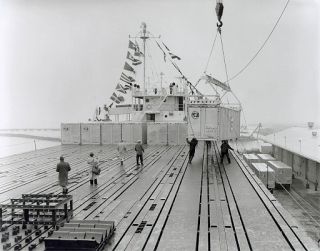
Shipping containers have evolved over many decades. The British first started using containers in the 1800s to haul with trains and horses. After a century of use, the first patents on shipping containers emerged.
Who Invented the Shipping Container?
Malcolm McLean first came up with standardizing haulage containers in the 1950s. He was a truck driver who entered the road haulage business and eventually bought the Pan Atlantic Tanker company, renaming it Seal-Land Shipping.
The first-ever container patented was a stackable steel unit. It had reinforced corners that made it very easy to stack without breaking. The design was uniform in size, theft-resistant, and easy to load. In April 1956, the first cargo ship set sail with 58 containers onboard.
Freight container handling companies find it extremely easy and cost-efficient to load and unload a standard-sized ISO container.
From there, shipping containers grew into a more significant idea than just intermodal transport. The first container-based homes started appearing in 1987. Philip Clark later patented this method in 1989.
The Vietnam War
Shipping containers really took off during the U.S.-Vietnam War in 1960. The U.S. military started developing alternative means to transport equipment quickly to the frontlines and reached out to Sea-Land shipping, a Malcolm McLean Company, to help with their supply chain.
It was quick and easy to seal the containers in the U.S. and send the shipment to Vietnam, where the containers would reach the troops on trucks. The empty boxes came back to the U.S. on container ships from ports in Japan.
Conclusion
ISO shipping containers remain robust modular structures. They are easy to cut, stackable, affordable, and widely used. As such, it is not surprising that they also provide other valuable functions. Storage sheds, generator housing, and housing are just a few of the different applications they serve.
Construction companies that work at multiple locations rent containers for portable offices, storage, and other purposes. When the work is complete, they return the container or ask the supplier to move it to the following location.
Mobile Modular Portable Solutions provides new and used metal storage containers for residential, commercial, and industrial applications. Call us at 866-459-7600 or get in touch with us to learn more about our industry-specific container solutions for rent and sale.
Frequently Asked Questions
What Are LNG ISO Tank Containers?
Liquefied natural gas (LNG) ISO tanks are specialized tanks to hold gas at temperatures of -162 °C (-260 °F). The container's interior wall is nickel steel, and the outer wall is carbon steel. They can also transport liquids and powders (hazardous and non-hazardous). Due to their standard size, it is easy to transport them on a ship, truck, or railway with other ISO containers.
How Much Does an ISO Tank Hold?
The standard 20-foot ISO tank holds 21,000 liters (5,547 gallons) of liquid. Other common sizes are 15,000 liters (3,963 gallons), 17,500 liters (4,623 gallons), and 23,000 liters (6,076 gallons).
How Much Does a Shipping Container Cost?
The cost of a shipping container depends on its size, condition, and features. New containers are more expensive than used containers. To get a better idea, a used 10-foot container costs less than $3,000 and a new one below $5,000. A new 40-foot container may cost around $8,000. To get the exact pricing, consult your supplier with your requirements.
Should I Rent or Buy a Shipping Container?
Renting or buying a container depends on various factors:
- How long do you need the container? If you need the container for more than a year, you should buy it.
- Will you need to make modifications? If you do not want to modify the container, you can rent it. If you do need to make modifications, it is best to buy.
- How will you manage the container? If you're going to take care of the maintenance and transportation services on your own, you can buy the container. If you want the vendor to handle these responsibilities, you should consider rental options.
What Is the Lifespan of a Shipping Container?
With appropriate care such as rust prevention, painting, and repairs, a container can easily last for 25 years or more.
Are Shipping Containers Safe?
Shipping containers feature marine-grade standardized steel that can withstand extreme environments at sea. This makes them highly resistant to fire, water, and other environmental factors. If you want additional security for storing expensive equipment, you can choose containers with high-security locks.
Should You Buy New or Used ISO Shipping Containers?
This decision depends on the following factors:
- Cost - New ISO containers cost significantly more than used ones. Single-trip containers are a good choice because they are cheaper than new containers and in good shape.
- Physical condition - If you choose to buy a used container, you must check its condition personally. Check for large dents, rust, mold, or any chemical contamination. This is not necessary with new containers.
- Lifespan - Depending on the condition, used containers may not last as long as new ones.
- Application - Decide what you want to use the container for. New ISO containers may be overkill if you just want them for storage.
- Modification - Due to higher structural integrity, it is easier to modify new containers than used ones.
How Do You Maintain an ISO Container?
By following these maintenance steps, you can increase the life of your intermodal container systems significantly:
- Keep the roof clear of snow or debris at all times.
- Clean any dust from the container as it can cause damage to paint.
- Maintain the floor and roof as per the guidelines from the supplier.
- Repair and fill any major dents immediately will body filler or caulk to prevent further degradation.
- Regularly inspect the rubber seals for shrinkage or brittleness. Replace them as necessary.
- Inspect the ground underneath the container for leveling.
- Repaint and chipped or rusted patches.
- If you have an HVAC system with the container, service it per the schedule.
How Can You Secure Stacked Shipping Containers?
The four corner fittings of the two containers must perfectly align when you stack. Once you put the containers in place, secure the twist-lock at each corner fittings to secure the unit.
Are Shipping Containers Wind and Water Tight?
Yes, they are. ISO containers on ships need to keep the contents safe from wind and water, for which they have heavy-duty rubber gaskets on the doors.
How Can You Load or Stack Shipping Containers?
OSHA defines numerous methods for the safe handling of intermodal containers during stacking and loading. Gantry cranes, straddle carriers, reach stackers, top loaders, forklifts, are often required to do the job.
How Should You Insulate a Shipping Container?
Insulation in thermal containers creates a vapor barrier with high heat resistance. You can insulate a shipping container with spray foam insulation made with polyurethane materials. Alternatively, you can use cotton, cork, or wool-based natural materials.
Related Blogs
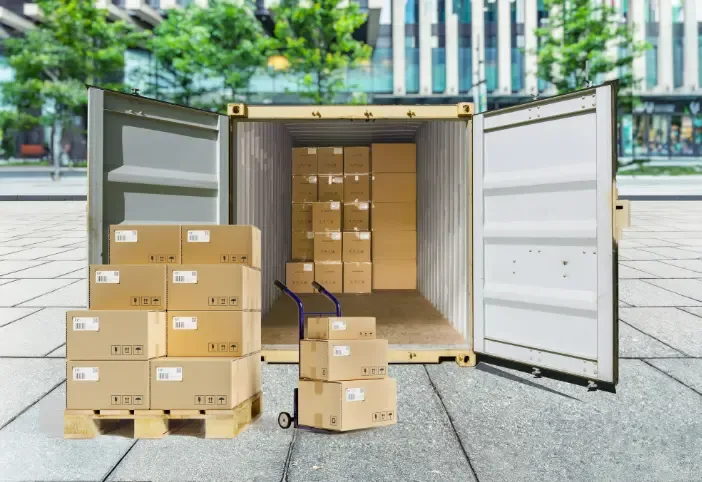
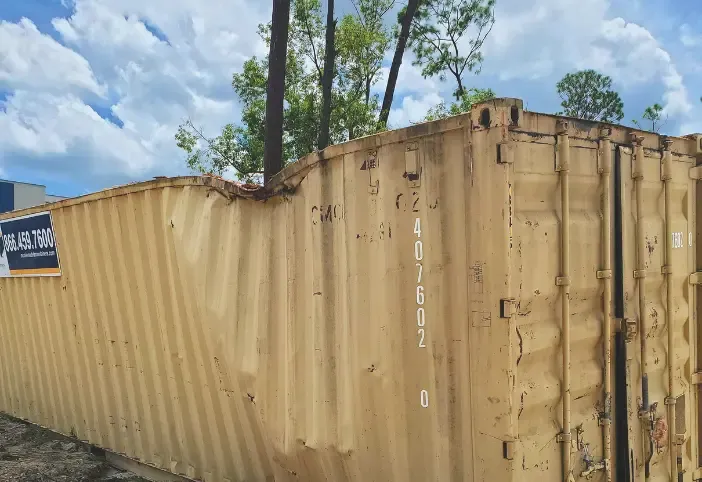
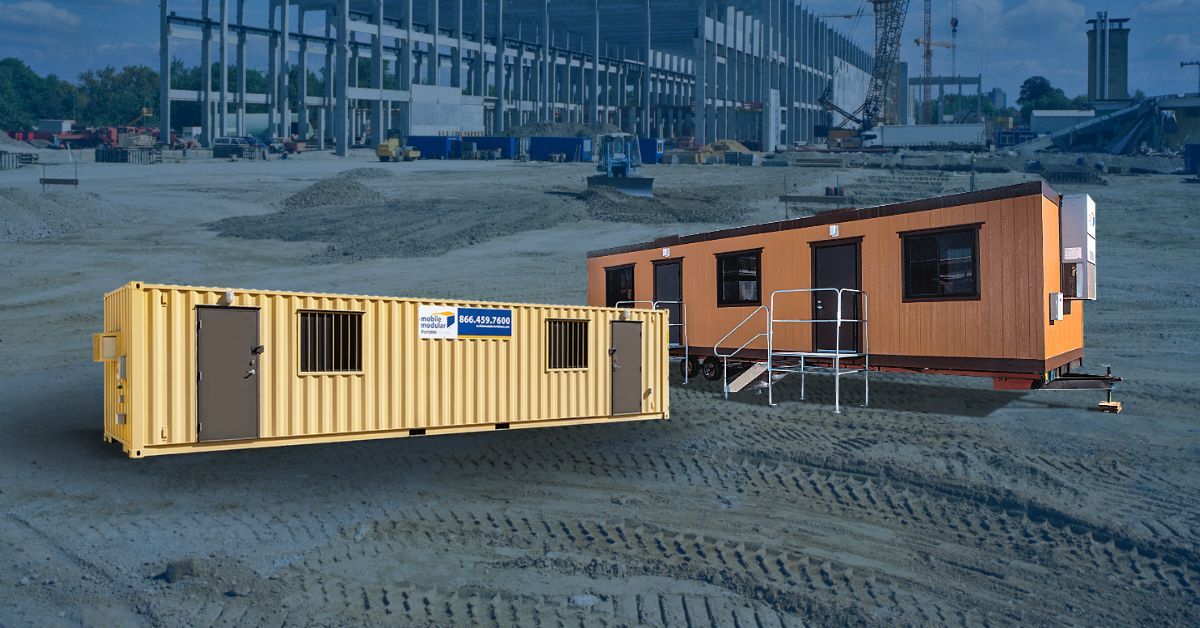
Subscribe to Our Blog
Enter your email address to subscribe to the blog and receive the notification of new posts by email.
Thank You for Subscribing to Our Blog!
Stay tuned for upcoming emails with valuable content that we hope will enhance your experience with our brand.
Both Pardot and mg360 form submissions failed.
